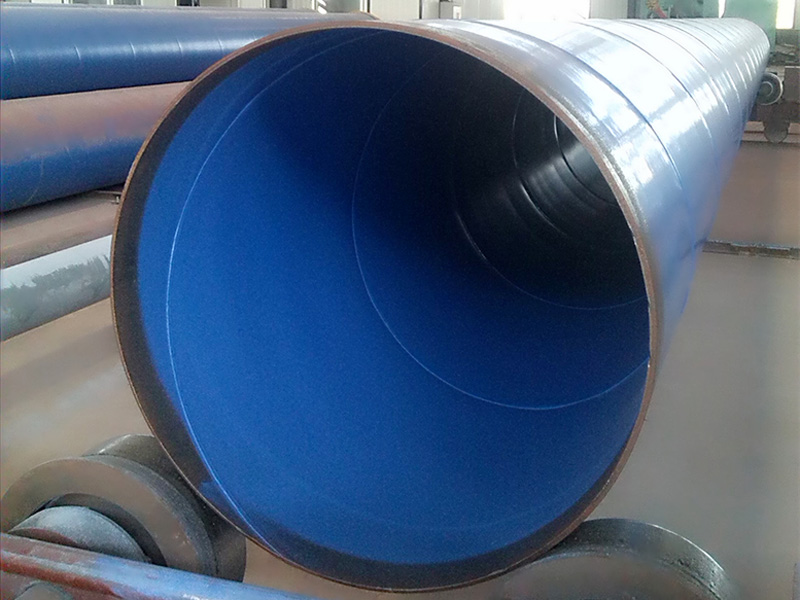Hello, welcome to visit the official website of Liaoning Qianfeng Steel Plastic Pipe Manufacturing Co., Ltd.!
Hello, welcome to visit the official website of Liaoning Qianfeng Steel Plastic Pipe Manufacturing Co., Ltd.!
Liaoning Qianfeng Steel Plastic Pipe Manufacturing Co., Ltd.
Address: Dawa Lingang Economic Zone, Panjin City
Website: www.xsk120.cn
Sales of a company
General Manager: Zhao Lei 18241448558
Sales Minister: Liu Wenli 18841483313
Sales Second Company
General Manager: Zhao Shuxiu 13188225517
Sales Minister: Pei Xiaojun 13804148185
Sales three companies and foreign trade
General Manager: Dai Gang 13604976693
Sales Minister: Chen Liming 18524274505
Sales four companies
General Manager: Chen Tieyan 18341472200
Sales Director: Meng Lin 19904144892
Under the action of direct current, the rare earth ions in the steel-plastic composite pipe containing steel-plastic composite pipe electrolyte obtain electrons at the cathode of the electrolytic cell to reduce the rare earth metal to metal. This is the main industrial production method for preparing mixed rare earth metals, light rare earth metals lanthanum, cerium, praseodymium, neodymium, and rare earth aluminum alloys and rare earth magnesium alloys. There are two methods: chloride molten salt electrolysis and fluoride molten salt electrolysis. The former method is mainly used in industry. The purity of the rare earth metal of the product is generally 95% to 98%, and it is widely used in metallurgy, machinery, new materials and other sectors as alloy components or additives. Compared with the metal thermal reduction method for preparing rare earth metals, this method has the advantages of lower cost and easy realization of continuous production. In 1857, W. Hillebrand et al. used the rare earth chloride molten salt electrolysis method to prepare rare earth metals for the first time. In 1940, the Austrian Treibacher Chemische Werke AG realized the industrial production of mixed rare earth metals from molten salt electrolysis. In 1973, Th. Goldschmidt AG used rare earth chloride prepared by high-temperature chlorination of bastnasite ore as a raw material, and electrolyzed rare earth metals with a 50,000A closed electrolytic cell. In 1902, W. Munthman proposed the use of fluoride molten salt electrolysis to prepare rare earth metals. In the 1980s, the Soviet Union used this molten salt electrolysis method to electrolyze rare earth metals in a 24000A electrolytic cell. China began to study the chloride molten salt electrolysis method in 1956, and has now developed to the scale of electrolyzing mixed rare earth metals, lanthanum, cerium, and praseodymium in 1000, 3000 and 10000A electrolytic cells. In the early 1970s, it began to study the fluoride molten salt electrolysis method. It was used in the industrial production of neodymium metal in the 1980s and has now been expanded to the production scale of 3000A electrolytic cells.

Chloride Molten Salt Electrolysis A molten salt electrolysis method using alkali metal and alkaline earth metal chlorides as electrolytes and rare earth chlorides as raw materials for electrolysis. Liquid rare earth metals are precipitated from the cathode and chlorine gas is precipitated at the anode. This method has the characteristics of simple equipment, convenient operation, and easy solution of the structure material of the electrolytic cell. However, it also has problems such as strong water absorption of rare earth chloride and low current efficiency. RECI3-KCl is currently an ideal electrolyte system. Since NaCI is cheaper than KCI, the RECI3-KCI-NaCl ternary system is also a commonly used electrolyte system in the industry. Principle of Chloride Molten Salt Electrolysis When RECl 3-KCl molten salt electrolyte is electrolyzed in an electrolytic cell with graphite as anode and molybdenum or tungsten as cathode, the electrolyte dissociates into RE 3+, K+ and Cl- ions in the molten state. Under the action of a DC electric field, RE 3+ and K+ migrate to the cathode and Cl-to the anode. Due to the different electrode potentials of ions, RE 3+ with a positive electrode potential first obtains electrons on the cathode and is reduced to metal.